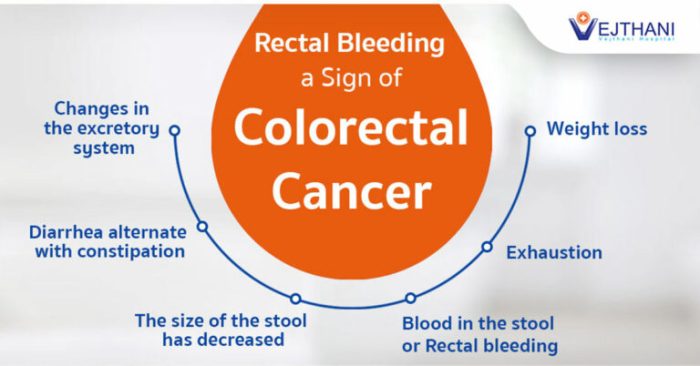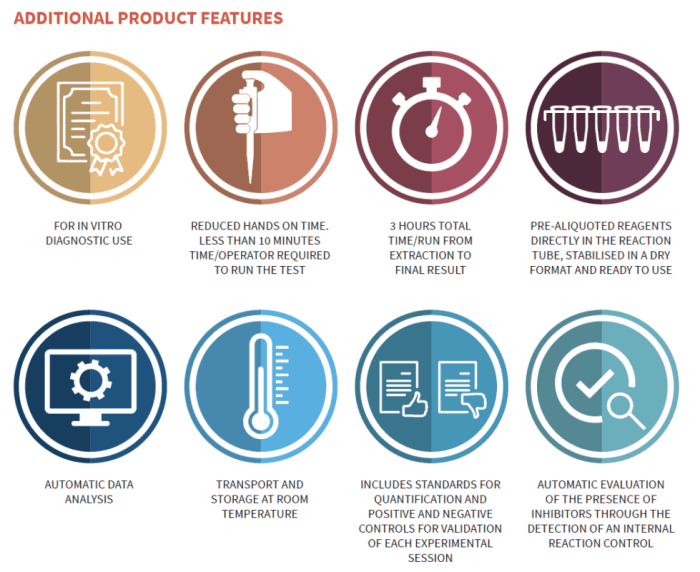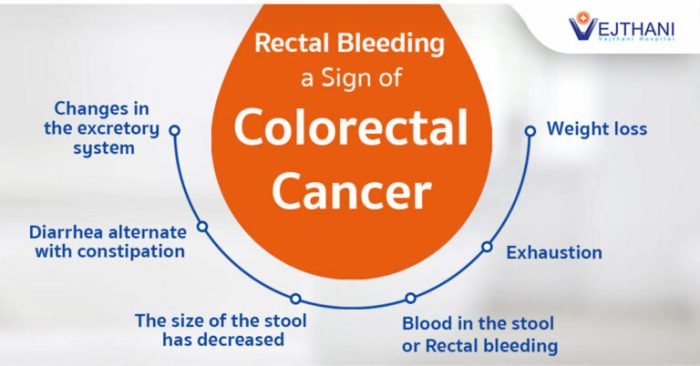How often should you get a colonoscopy? This question is crucial for maintaining digestive health and preventing colorectal cancer. A colonoscopy is a procedure used to examine the colon and rectum for abnormalities, playing a vital role in preventative care. Understanding the factors influencing frequency, recommended guidelines, and alternative screening methods is key to making informed decisions about your health.
The procedure involves inserting a flexible tube with a camera into the rectum and colon, allowing doctors to identify potential issues early.
This guide will explore the factors affecting colonoscopy frequency, including age, family history, and lifestyle choices. We’ll also delve into the recommended guidelines for individuals at average risk and those with increased risk factors, examining different stages and interpretations of these guidelines. Furthermore, we’ll discuss alternative screening methods, the preparation process, potential side effects, and the importance of early detection.
Finally, we’ll address patient considerations, frequently asked questions, and technological advancements in colonoscopy procedures.
Introduction to Colonoscopies
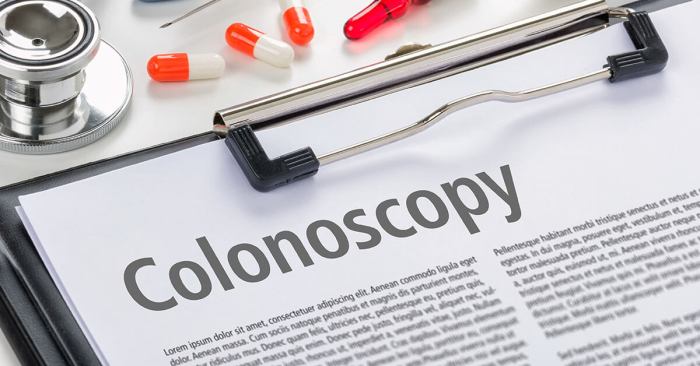
A colonoscopy is a medical procedure that allows doctors to examine the large intestine (colon) and rectum. It’s a crucial tool for detecting and preventing colorectal cancer, a significant health concern. Early detection significantly improves treatment outcomes and often leads to better chances of survival.The primary purpose of a colonoscopy is preventative care. By visually inspecting the colon, doctors can identify polyps, abnormal growths that may develop into cancer over time.
Removing these polyps during the procedure can prevent future cancer development, significantly reducing the risk of colorectal cancer.
The Colonoscopy Procedure
A colonoscopy is a minimally invasive procedure, meaning it involves minimal incisions and is typically performed under sedation or general anesthesia. This ensures patient comfort and safety throughout the process. The procedure involves inserting a flexible tube with a tiny camera (a colonoscope) into the rectum and guiding it through the colon. The camera transmits images to a monitor, allowing the doctor to visualize the entire colon lining.
Steps in a Colonoscopy Procedure
This table Artikels the typical steps involved in a colonoscopy:
| Step | Description |
|---|---|
| 1. Preparation | Patients are typically asked to follow a strict liquid diet and take medications to cleanse the colon, ensuring a clear view of the colon lining. This step is critical for successful visualization. |
| 2. Sedation/Anesthesia | Patients are given sedation or general anesthesia to ensure comfort and relaxation during the procedure. This minimizes discomfort and allows for a smoother examination. |
| 3. Insertion of the Colonoscope | A flexible tube with a camera (colonoscope) is inserted into the rectum and guided gently through the colon. |
| 4. Visualization and Examination | The camera transmits images to a monitor, allowing the doctor to view the entire colon lining and look for any abnormalities. |
| 5. Polyp Removal (if necessary) | If polyps are detected, they can often be removed during the procedure. This helps prevent the potential development of cancer. |
| 6. Removal of the Colonoscope | The colonoscope is gently withdrawn, and the patient is monitored until the effects of the sedation or anesthesia wear off. |
| 7. Post-Procedure Care | Patients are usually monitored for a period after the procedure to ensure they are recovering well. Clear instructions are given for managing any discomfort or potential side effects. |
Factors Influencing Colonoscopy Frequency
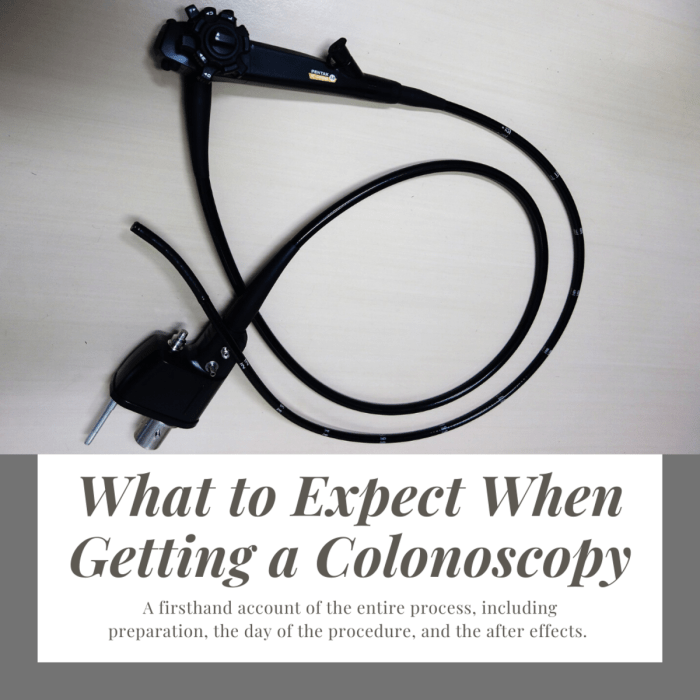
Understanding the factors influencing colonoscopy frequency is crucial for personalized preventive healthcare. This knowledge empowers individuals to make informed decisions about their screenings, ensuring they receive the appropriate level of care based on their unique risk profile. By considering factors like age, family history, and lifestyle, individuals can work with their doctors to determine the optimal screening schedule.The frequency of colonoscopies isn’t a one-size-fits-all approach.
So, how often should you get a colonoscopy? It really depends on your individual risk factors, but generally, adults over 50 should discuss it with their doctor. Knowing potential reactions to certain foods, like a black pepper allergy, is also key. For example, if you experience unusual symptoms after consuming black pepper, you should consult a doctor and consider exploring black pepper allergy symptoms diagnosis and what to avoid to understand potential triggers and preventative measures.
Ultimately, prioritizing your health by discussing preventative screenings with your doctor is essential.
Different individuals require varying screening intervals based on their personal risk factors. This tailored approach maximizes the effectiveness of colon cancer prevention efforts.
Age-Related Risk Factors
Age is a significant determinant in colonoscopy recommendations. The risk of developing colon cancer increases with age, making regular screenings more important for older individuals. While the general guideline is to begin screening at age 50, factors like family history and personal health conditions can influence this recommendation. Individuals with higher-than-average risk factors may need to start screenings earlier.
Family History of Colon Cancer
A strong family history of colon cancer significantly raises an individual’s risk. If a close relative (parent, sibling, or child) has been diagnosed with colon cancer or polyps, the risk of developing the disease is substantially increased. This heightened risk often warrants more frequent screenings than the standard guidelines.
Personal Health Conditions
Certain pre-existing health conditions can also influence colonoscopy frequency. Individuals with inflammatory bowel disease (IBD), such as Crohn’s disease or ulcerative colitis, are at higher risk and may need more frequent screenings. Additionally, individuals with a history of adenomatous polyps (abnormal growths) require more intensive monitoring. The presence of these conditions necessitates more frequent screening to detect potential issues early.
Lifestyle Choices and Risk Factors
Lifestyle choices play a significant role in colon cancer prevention and screening recommendations. A diet high in processed foods and low in fruits and vegetables can increase the risk of developing colon cancer. Lack of physical activity can also contribute to this elevated risk. Individuals who maintain a healthy lifestyle with a balanced diet and regular exercise often have a lower risk and may benefit from less frequent screenings.
Comparison of Colonoscopy Frequency Guidelines
| Risk Group | Colonoscopy Frequency Recommendation |
|---|---|
| Average Risk (no family history, no personal conditions) | Every 10 years, starting at age 50 |
| High Risk (family history of colon cancer, personal history of polyps or IBD) | Every 5-7 years, starting potentially earlier than age 50, or based on specific medical advice. |
| Very High Risk (multiple family members with colon cancer, specific genetic syndromes) | Every 3-5 years, starting potentially earlier than age 50, or based on specific medical advice. |
Note: These are general guidelines, and individual recommendations should be discussed with a healthcare professional.
Recommended Guidelines for Colonoscopy
Understanding the recommended guidelines for colonoscopies is crucial for preventive health. These guidelines are developed by medical professionals and organizations based on extensive research and clinical experience, helping individuals make informed decisions about their health. Adhering to these recommendations can significantly reduce the risk of colorectal cancer, a preventable disease with early detection.
Initial Colonoscopy Age Recommendations
The American Cancer Society (ACS) and other reputable organizations recommend that individuals begin screening for colorectal cancer with colonoscopies at age 45. This age is considered a threshold for significant risk increase, aligning with the observed incidence patterns of colorectal cancer. Individuals with a family history of the disease or other risk factors may need to start screening earlier.
Frequency of Colonoscopies for Average Risk
For individuals deemed to be at average risk for colorectal cancer, the recommended frequency of colonoscopies is every 10 years, following the initial screening at age 45. This frequency is based on the typical rate of polyp development and the potential for early detection. It is essential to adhere to this schedule to ensure early intervention and potential prevention of cancerous growths.
Frequency for Individuals with Increased Risk Factors
Individuals with increased risk factors, such as a family history of colorectal cancer, inflammatory bowel disease (IBD), or a personal history of polyps, require more frequent colonoscopies. The frequency is determined by the severity of the risk factors and is usually discussed with a healthcare provider. Personalized recommendations are vital to address specific risk profiles, and the frequency might be adjusted based on factors like the type and number of polyps detected in previous screenings.
Interpreting Guidelines for Various Age Groups and Risk Profiles
| Age Group | Risk Profile | Colonoscopy Frequency |
|---|---|---|
| 45-54 | Average Risk | Every 10 years, starting at age 45 |
| 55-75 | Average Risk | Every 10 years, starting at age 45 |
| 45-54 | Increased Risk (e.g., family history of colorectal cancer) | Every 5-10 years, as advised by healthcare provider |
| 55-75 | Increased Risk (e.g., inflammatory bowel disease) | Every 1-3 years, as advised by healthcare provider |
| Over 75 | Average Risk | Consult with healthcare provider based on individual factors |
| Over 75 | Increased Risk | Consult with healthcare provider based on individual factors |
This table provides a general overview of recommended guidelines. Individual circumstances and specific risk factors should be discussed with a healthcare provider to determine the most appropriate screening schedule. It’s vital to have a personalized approach to ensure the most effective and timely preventative care.
Regular colonoscopies are crucial for preventative health, but how often is enough? While the frequency varies based on individual risk factors, it’s important to understand that conditions like fibromyalgia and weather changes can impact your overall well-being. For example, some research suggests that weather fluctuations can affect fibromyalgia symptoms, and this is a good example of how your health as a whole needs to be taken into consideration when discussing health screenings like colonoscopies.
Ultimately, it’s best to discuss your specific needs with your doctor to determine the ideal schedule for your colonoscopies. fibromyalgia and weather changes can be a factor, but it is just one of many considerations.
Alternatives and Considerations
Beyond colonoscopies, several alternative screening methods exist for colorectal cancer. Choosing the right approach depends on individual factors, including medical history, lifestyle, and personal preferences. Understanding the pros and cons of each option empowers informed decisions about preventive care.
Alternative Screening Methods
Various methods can detect colorectal polyps and cancer, each with unique strengths and limitations. Fecal immunochemical tests (FIT) and fecal occult blood tests (FOBT) are non-invasive, relying on stool samples to detect blood, a potential indicator of early cancer. These tests are generally less expensive and easier to administer than colonoscopies, making them accessible to a wider population.
However, their sensitivity for detecting early-stage polyps and cancer is lower, potentially requiring follow-up procedures. Computed Tomography Colonography (CTC), or virtual colonoscopy, uses CT scans to create images of the colon. While less invasive than a colonoscopy, CTC may miss some abnormalities, especially in individuals with complex colon anatomy.
Situations Where Colonoscopy Might Not Be Recommended
Certain situations might make colonoscopy less suitable as the primary screening method. Individuals with significant prior abdominal surgeries or inflammatory bowel diseases (IBD), such as Crohn’s disease or ulcerative colitis, might experience complications from a colonoscopy. In these cases, alternative screening methods or a modified approach under the guidance of a gastroenterologist may be necessary. A patient’s overall health and tolerance for procedures are also critical considerations.
Colonoscopy Preparation and Importance
Proper preparation is crucial for a successful and safe colonoscopy. The preparation process, typically involving a clear liquid diet and laxatives, ensures the colon is adequately cleansed, allowing for a clearer view during the procedure. This minimizes the risk of incomplete visualization and enables accurate detection of any abnormalities. The preparation process can be somewhat uncomfortable but is vital for optimal diagnostic accuracy.
The detailed instructions from a medical professional should be followed meticulously.
Common Side Effects of Colonoscopies
Colonoscopies, while generally safe, can occasionally cause side effects. These are usually mild and temporary.
- Cramping or bloating: These are common reactions to the preparation process, particularly from the laxatives. Over-the-counter medications or lifestyle adjustments can help manage these symptoms.
- Mild abdominal discomfort: Some individuals experience mild cramping or discomfort during or immediately after the procedure, which usually subsides quickly.
- Bleeding or bruising at the insertion site: These minor complications are infrequent and typically resolve on their own.
- Infection: Infection is a rare complication that can be prevented through proper sterilization techniques and adherence to medical guidelines.
- Reactions to sedation: Reactions to the sedatives used during the procedure, such as nausea or vomiting, are uncommon but can occur. Medical professionals monitor patients closely to address these issues.
Importance of Early Detection
Catching colorectal cancer early is crucial for a positive outcome. Early detection dramatically increases the chances of successful treatment and significantly improves patient survival rates. The earlier the diagnosis, the less the cancer has spread, making treatment more manageable and less invasive. This early intervention can also prevent the disease from progressing to more advanced stages, often requiring aggressive and more debilitating treatments.Early detection allows for less extensive surgery, potentially preserving the patient’s quality of life.
Furthermore, early detection often means that less aggressive chemotherapy or radiation therapy may be required, minimizing side effects and allowing for a quicker recovery. The impact on overall well-being is substantial.
Significance of Early Detection in Treatment Outcomes, How often should you get a colonoscopy
Early detection plays a pivotal role in the effectiveness of colorectal cancer treatment. When the cancer is discovered in its initial stages, it is typically confined to the colon or rectum. Surgical removal of the affected area often suffices as a primary treatment. The smaller the tumor, the less likely it is to have spread to other parts of the body, reducing the need for additional treatments like chemotherapy or radiation therapy.
Minimizing the extent of the cancer’s spread directly correlates with a higher likelihood of successful treatment and a better prognosis.
Impact on Mortality Rates
Regular screenings and early detection significantly contribute to reduced mortality rates from colorectal cancer. Studies consistently demonstrate a strong correlation between the frequency of screenings and a decrease in colorectal cancer-related deaths. Early detection allows for prompt intervention, potentially preventing the disease from progressing to life-threatening stages. Early intervention through screening programs allows for timely treatment, ultimately saving lives.
Survival Rates by Stage
The following table illustrates the impact of early detection on survival rates for different stages of colorectal cancer. The data highlights the stark difference in outcomes between early and late-stage diagnoses.
| Stage | Five-Year Survival Rate (%) | Description |
|---|---|---|
| Stage I | 90-95 | Cancer is localized to the colon or rectum, typically treatable with surgery alone. |
| Stage II | 70-85 | Cancer has grown somewhat, but hasn’t spread to nearby lymph nodes. Surgery and sometimes adjuvant therapies (like chemotherapy) are often needed. |
| Stage III | 50-70 | Cancer has spread to nearby lymph nodes. Surgery and adjuvant therapies are almost always necessary. |
| Stage IV | 10-20 | Cancer has spread to distant organs (metastasized). Treatment focuses on managing symptoms and extending life. |
“Early detection is a powerful tool in the fight against colorectal cancer, significantly improving treatment outcomes and reducing mortality rates.”
Patient Considerations
Deciding on a colonoscopy schedule can feel daunting. It’s a personal choice, and understanding the factors involved is key. This section dives into practical advice for patients, common questions, and the crucial role of communication with your doctor in creating a tailored screening plan. Ultimately, the goal is to empower you to make informed decisions about your health.This section Artikels practical steps for patients navigating colonoscopy scheduling.
It highlights the importance of open communication with your physician and provides a framework for understanding the optimal frequency for your individual needs.
Practical Advice for Patients
Understanding your personal risk factors and family history is paramount. Talk to your doctor about your medical history, including any family members with colon cancer or polyps. This information helps tailor a screening plan to your specific situation. Lifestyle choices, such as diet and exercise, also play a significant role in colon health. Making healthy choices can contribute to a lower risk of developing colon issues.
Regular check-ups with your doctor are vital for preventative care. They can assess your overall health and provide guidance on screening options, including colonoscopies.
Wondering how often you should schedule a colonoscopy? Generally, adults at average risk should start getting screened around age 50. However, factors like family history can influence your personal screening schedule. Learning about supplements like l-theanine, which is often touted for its stress-reducing properties, might be interesting for you too. l theanine everything you need to know Ultimately, discussing your specific health situation with your doctor is crucial for determining the ideal frequency for your colonoscopy.
Common Questions About Colonoscopy Frequency
Patients often have questions about how often they should get a colonoscopy. The frequency depends on various factors, and a doctor can provide the most accurate recommendation based on individual risk factors. Some patients wonder about the potential discomfort or risks associated with the procedure. Your doctor can address these concerns and provide necessary information to ease any apprehension.
Patient-Physician Communication
Effective communication between patients and their physicians is critical in determining the optimal screening plan. Patients should feel comfortable asking questions about their personal risk factors and potential benefits of different screening schedules. This collaborative approach ensures a personalized plan that aligns with individual health needs.
Open communication with your physician is crucial for creating a tailored colonoscopy screening plan. This collaborative effort ensures the best possible approach to your health.
Frequently Asked Questions (FAQ)
Q: How often should I get a colonoscopy if I have no family history of colon cancer?
A: Individuals with no family history of colon cancer typically follow guidelines for average-risk individuals, but your physician can tailor the schedule based on your complete health profile.
Q: What if I have a family history of colon cancer or polyps?
A: A family history of these conditions increases your risk, and your doctor may recommend more frequent screenings. This tailored approach is crucial for early detection.
Q: What are the potential risks of a colonoscopy?
A: While rare, potential risks include bleeding, infection, or perforation. Your physician will discuss these risks and potential complications in detail. Thorough preparation and proper medical care minimize these risks.
Q: What are the benefits of early detection of colon polyps?
A: Early detection allows for removal of polyps before they have the chance to develop into cancerous growths. This proactive approach significantly improves the chances of a positive outcome.
Technological Advancements
Staying up-to-date with the latest advancements in colonoscopy technology is crucial for optimal screening. These innovations not only improve the accuracy of diagnosis but also significantly reduce the patient experience. This allows for more refined screening guidelines and a better overall approach to preventative care.Technological advancements have revolutionized colonoscopy, impacting everything from the procedure itself to the interpretation of results.
The goal of these improvements is to make the process safer, more comfortable, and more effective in identifying potential issues early.
Advancements in Colonoscopy Technology
Improved imaging techniques and minimally invasive approaches have led to more precise and less invasive procedures. These innovations enhance both the diagnostic accuracy and the patient experience.
- High-Definition Imaging: Modern colonoscopes feature high-definition cameras and advanced image processing, enabling better visualization of the colon’s inner lining. This heightened clarity allows for the detection of subtle abnormalities, polyps, or early signs of cancer that might be missed with older technology. This improved resolution aids in accurate polyp identification and characterization, leading to more confident diagnoses.
- Narrow Band Imaging (NBI): NBI is a technique that uses specific wavelengths of light to enhance the contrast of the colon’s mucosa. This provides a clearer view of the vascular patterns within the lining, making it easier to identify subtle abnormalities and potential precancerous lesions. This capability is especially valuable in the identification of subtle changes in the colon’s tissue structure that might indicate early stages of cancer or precancerous polyps.
- Chromoendoscopy: This technique involves injecting a dye into the colon to stain abnormal tissue, making it stand out more vividly. The dye enhances the contrast between healthy and abnormal tissues, providing a more detailed view of the colon’s lining and assisting in the detection of small or flat lesions. This improves visualization, allowing for a more precise evaluation of suspicious areas.
Virtual Colonoscopy
A virtual colonoscopy is a non-invasive procedure that uses computed tomography (CT) scans to create detailed images of the colon. This alternative method is often considered a less invasive and less uncomfortable option compared to traditional colonoscopy.
| Feature | Virtual Colonoscopy | Standard Colonoscopy |
|---|---|---|
| Invasiveness | Non-invasive | Invasive |
| Preparation | Similar to standard colonoscopy, requiring bowel preparation | Requires bowel preparation |
| Accuracy | May miss small polyps or subtle abnormalities; less detailed view than standard colonoscopy | More detailed view and higher accuracy in identifying polyps and abnormalities |
| Discomfort | Minimal discomfort; no sedation typically required | Potential for mild discomfort; sedation often used |
| Cost | Generally lower | Generally higher |
| Preparation Time | Shorter time for preparation | Longer time for preparation |
| Recovery Time | Immediate | Moderate |
“Virtual colonoscopy is a useful screening tool, but it may not detect all abnormalities as thoroughly as a standard colonoscopy.”
Closing Notes: How Often Should You Get A Colonoscopy
In conclusion, understanding the optimal frequency for colonoscopies requires a comprehensive approach, considering individual risk factors and health history. While guidelines provide general recommendations, open communication with your physician is essential for tailoring a personalized screening plan. Early detection is paramount in the fight against colorectal cancer, and regular screenings can significantly improve treatment outcomes and reduce mortality rates.
By weighing the pros and cons of different screening options and adhering to recommended guidelines, you can make proactive choices for your health and well-being.




